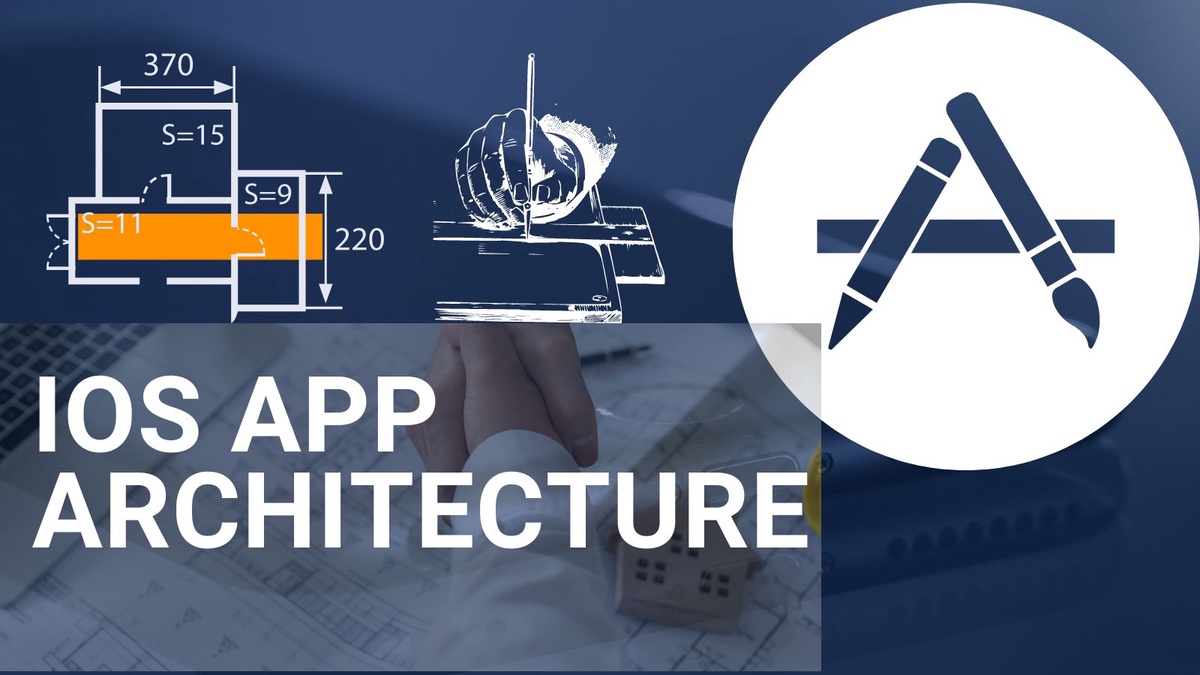The general arrangement and structure of an iOS application's coding is referred to as its architecture. It comprises structuring the code to guarantee maintainability, scalability, and simplicity of development, as well as how the various app components are built and interact with one another.
In iOS programming, many architectural patterns are frequently employed, with the Model-View-Controller (MVC) architecture being a widely recognized one. To overcome MVC's shortcomings, developers have, nonetheless, also embraced other patterns and architectures in recent years.
It's crucial to take the project's needs and complexity into account while choosing the right architecture before beginning iOS development. Businesses may choose expert iOS Mobile App Development Services to ensure the use of best practices and optimal architecture tailored to their particular demands, resulting in sturdy and well-structured software.

Understanding iOS App Architecture:
In the world of iOS app development, knowing the architecture is akin to grasping a digital building's plan. It determines how various code components interact with one another by organizing the code.
The main actors are Views, which control what users see and interact with, Controllers, which serve as a bridge between Views and Models, and Models, which handle data and logic.
If any of these three structures seem a little too simple, there are more options like MVVM and MVP, each of which offers a different method of organizing code. Think of it like selecting the optimal configuration for a jigsaw; it all relies on the parts you already have and how you want them to fit together.
Here are some common iOS app architectures:
Model-View-Controller (MVC):
Model-View-ViewModel (MVVM):
Model-View-ViewModel (MVVM) is an architectural pattern commonly employed in software development, particularly in the realm of building user interfaces. MVVM extends the concepts of the traditional Model-View-Controller (MVC) pattern and introduces a ViewModel to enhance the separation of concerns.
-
Model: Similar to MVC, the Model represents the application's data and business logic.
-
View: This component is responsible for displaying the user interface and presenting data to the user, similar to MVC.
-
ViewModel: The ViewModel acts as an intermediary between the Model and the View. It transforms the data from the Model into a format that is easily displayed in the View. It also handles user input from the View and communicates with the Model to update data.
MVVM is valued for its ability to facilitate better testability, maintainability, and scalability. The separation of concerns between the Model, View, and ViewModel allows for more modular and organized code, making it easier to adapt and extend applications over time. This pattern is widely used in modern software development, especially in frameworks like SwiftUI and React.
Model-View-Presenter (MVP):
Model-View-Presenter (MVP) is an architectural pattern commonly used in software development, particularly for creating user interfaces. It builds upon the concepts of the Model-View-Controller (MVC) pattern, introducing the Presenter to enhance separation of concerns.
-
Model: As in MVC, the Model represents the application's data and business logic.
-
View: This component is responsible for displaying the user interface and presenting data, similar to the View in MVC.
-
Presenter: The Presenter acts as an intermediary between the Model and the View. It receives user input from the View, processes it (potentially modifying the Model), and updates the View accordingly. The key distinction in MVP is that the Presenter is responsible for handling user input, while the View remains more passive.
MVP is known for its clear separation of responsibilities, making the codebase more modular and easier to test. This pattern is widely employed in various software development frameworks and is valued for its maintainability and scalability, especially in scenarios where complex user interfaces need effective management of user interactions and data.
VIPER (View, Interactor, Presenter, Entity, Routing):
Clean Architecture:
Clean Architecture is a software design philosophy introduced by Robert C. Martin, emphasizing separation of concerns and maintainability. It provides a structured approach to organizing code, ensuring that the core business logic remains independent of external frameworks and tools. The architecture is divided into several layers:
-
Entities: Represent the application's business logic and data entities. These entities are independent of external frameworks and databases.
-
Use Cases: Implement application-specific business rules and orchestrate interactions between entities. Use Cases define the application's behavior.
-
Interface Adapters: Convert data between the Use Cases and the entities, as well as presenting it to the outer layers. Adapters act as translators, ensuring that the business logic is decoupled from external frameworks.
-
Frameworks and Drivers: The outermost layer contains external tools, frameworks, and drivers such as UI, databases, or web frameworks. This layer is responsible for communication with the external environment.
Clean Architecture promotes maintainability and testability by reducing dependencies and making it easier to modify or replace components without affecting the core business logic. This approach is adaptable to various software development environments, making it suitable for projects of different sizes and complexities.


No comments yet